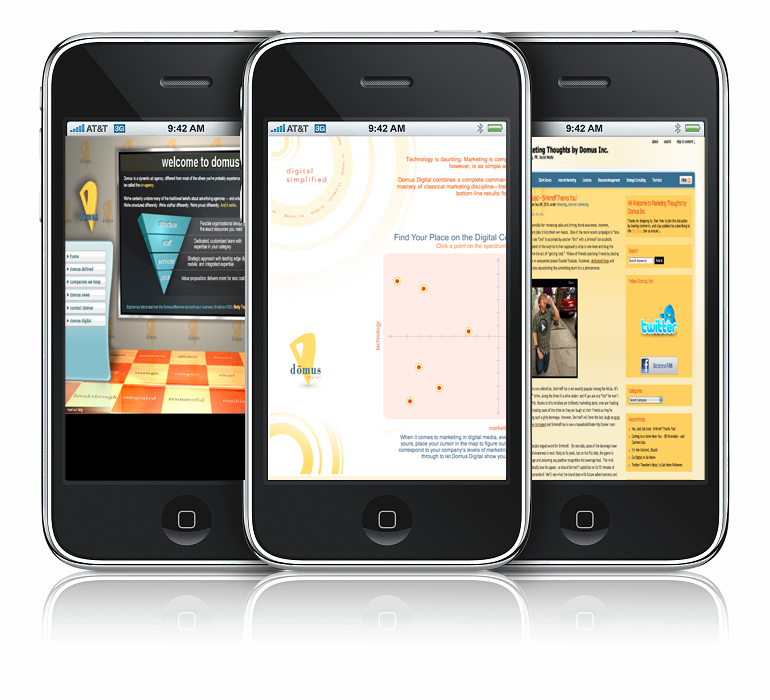You Just Got Iced – Smirnoff Thanks You!
September 9, 2010IKEA’s Stunt Paws its Way into Media Phenomenon – MEOW
September 22, 2010 Last year 56.9 million people accessed the web from their cell phones. These people aren’t just surfing the web. They’re looking for a product or a service or a company, in their area, and they wanted it five minutes ago. That’s an audience full of movers, shakers and buyers. And one you can’t afford to miss out on. $1.6 billion worth of purchases were made on mobile devices last year. That’s A LOT of spending.
Last year 56.9 million people accessed the web from their cell phones. These people aren’t just surfing the web. They’re looking for a product or a service or a company, in their area, and they wanted it five minutes ago. That’s an audience full of movers, shakers and buyers. And one you can’t afford to miss out on. $1.6 billion worth of purchases were made on mobile devices last year. That’s A LOT of spending.
If we’ve learned anything from social media, it’s that we need to be where our customers are. According to Morgan Stanley, mobile internet grows faster than any other platforms including Netscape, and AOL in history. Customers, and more importantly, NEW customers, are on their mobile phones.
It’s clearer than ever – mobile marketing is something you simply can’t miss. So what do phone users see when they go to your website? There is a fundamental design difference between a regular website and a mobile website. It’s worth grabbing your phone and taking a look. We’ll wait.
A mobile site needs to have a different content structure for viewing in palm sized screens. It can’t have too much information in one screen. Customers can zoom in on your microscopic content, but who wants to do that?
Mobile searchers are on a mission. They want an address or phone number, a menu, movie times, store hours, or a quick drink not only by searching keywords, but also by geography. And they want it NOW. A mobile site should be set up to serve up every types of information.
Mobile social media is also pumping up traffic to your mobile web. I’m sure you’re not surprised to learn that Facebook has surpassed Google to become the top source for web traffic, but you should take note that the Facebook application for smartphones is ranked #1 in popularity across most smartphone platforms. Once users “like” your page’s content or products, it needs to be displayed correctly in both desktop and mobile forms.
It’s just a simple way to make your site instantly more accessible to a mobile user.
First, revisit the existing website, evaluate what’s currently there, and more importantly, what you want to see there. Then you can begin to plan your mobile content and information architecture.
Next, consider new user experience (UX), such as multi-touch and gesture zooming in/out or selection options, which are popular in mobile UX. Inconsistency between touch and mouse interface can block some functions of your website. For example, a rollover menu or image will not work on mobile device at all. Keep these portions of your website in mind when evaluating your site. User interaction should be re-considered and re-created in all applicable areas of your website.
Also, please be aware of Flash and its drawbacks for mobile web. Cell phones and smart phones are not compatible with Flash. Period. If your website uses Flash mobile users are seeing a whole lot of nothing. (Technically, Android devices do currently support Flash but practically performance is very bad).
Lastly, re-implement new analytics that can track mobile activities. Keep in mind that you need to track not only web traffic sources, but also “app traffic sources,” which can be more tricky. Location-based query and phone-query should be considered and counted as well.
In the March 2010 issue of Fast Company Magazine, it was noted that US Cell phone penetration was at 34% in 2000 and increased to 89% in 2010. While those figures are impressive, they don’t point out a very critical detail of today’s cell phone: it’s not a cell phone at all, it’s a smart phone. Phones today are used for so much more than talking and texting – they’re handheld computers and with the right features they can connect to the internet, engage in social media, upload videos, and if your business has a functional mobile site, lead customers directly to you. If your site is not smart phone compatible, then throw in the towel, because more than half of cell phone internet users go online daily through their mobile device and its rate is increasing. But if you can sustain business by losing half your customers – then please, let us know how.
Domus is an interactive agency with the ability to help you transform your business into a mobile machine with 24/7 access through smart phone technology. Let us help you.



